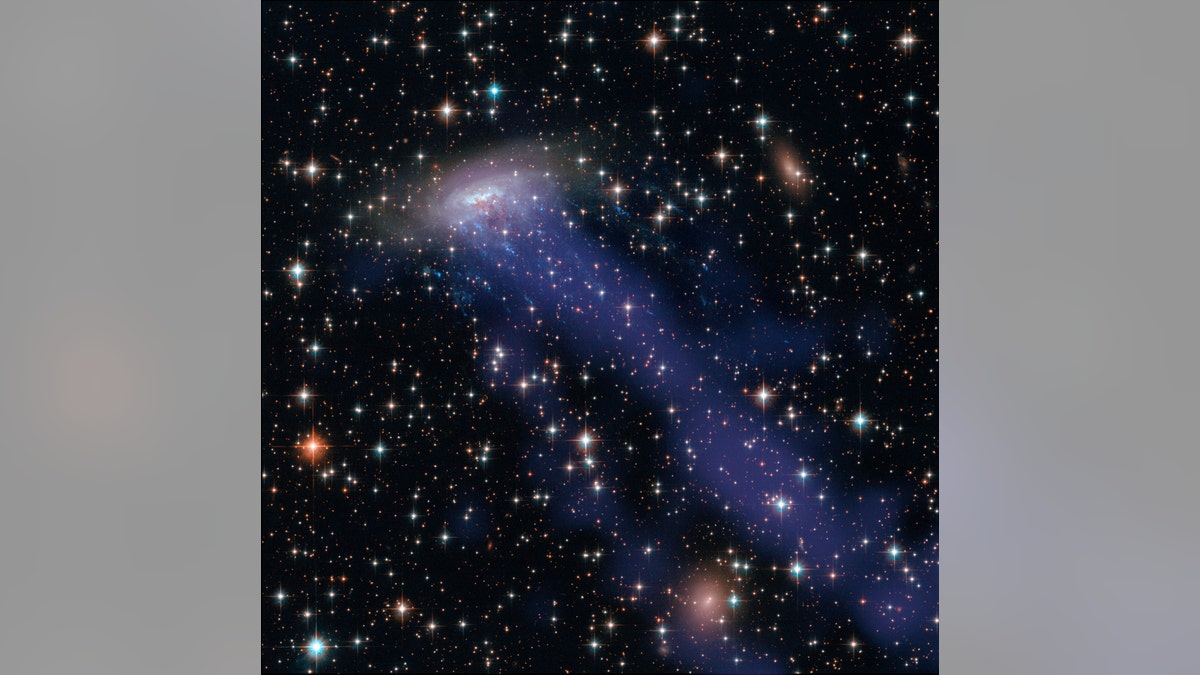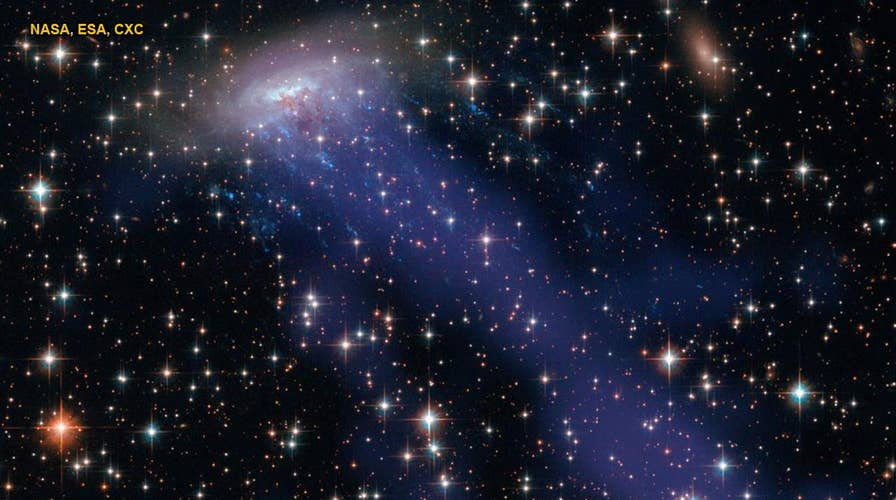NASA spots mysterious galactic 'jellyfish' in space
The forthcoming James Webb Telescope will quickly have its hands full as NASA prepares to study a 'jellyfish'-like galaxy, known as ESO 137-001. The galaxy is of interest due to its 'tail' made up of long gas stretching 260,000 light-years across space. The 'jellyfish' was first discovered in 2014 by the Hubble Space Telescope and Chandra X-ray Observatory. The James Webb Telescope is slated to launch in 2021.
Jellyfish have been on Earth for approximately 500 million years, making them the longest surviving creature on the planet. But now, NASA has a "jellyfish" of its own in space.
The government space agency said a "jellyfish"-like galaxy, known as ESO 137-001, with a tail made up of long gas stretching 260,000 light-years across space, is "swimming" into the view of the space agency's forthcoming James Webb Telescope.
"Blue ribbons of young stars dangle from the galaxy’s disk like cosmic tentacles," NASA said in the statement. "If you look at the galaxy in X-ray light, however, you will find a giant tail of hot gas streaming behind the galaxy. After launch, NASA’s James Webb Space Telescope will study ESO 137-001 to learn how the gas is being removed from the galaxy, and why stars are forming within that gaseous tail."
NASA WANTS TO SEND ASTRONAUTS TO MOON'S MYSTERIOUS SOUTH POLE
The James Webb Telescope is slated for launch in 2021. The "jellyfish" was first observed by the Hubble Space Telescope and the Chandra X-ray Observatory in 2014.
ESO 137-001 isn't exactly close to Earth, even though it's similar in appearance to the Milky Way galaxy. It's approximately 220 million light-years away from our planet and is part of the Triangulum Australe constellation and is part of a galaxy cluster known as Abell 3627.

This image combines NASA/ESA Hubble Space Telescope observations with data from the Chandra X-ray Observatory. As well as the electric blue ram pressure stripping streaks seen emanating from ESO 137-001, a giant gas stream can be seen extending towards the bottom of the frame, only visible in the X-ray part of the spectrum. (Credit: NASA, ESA, CXC)
Galaxy clusters are surrounded by hot gases that eventually form stars. However, how the stars form in the tail and the time it takes for that to happen is still puzzling to researchers.
“Both gas and dust are getting stripped off, but how much and what happens to the stripped material and the galaxy itself are still open questions,” said Stacey Alberts of the University of Arizona, a co-investigator on the project,in the statement.
“We think it’s hard to strip off a molecular cloud that’s already forming stars because it should be tightly bound to the galaxy by gravity," Alberts added. "Which means either we’re wrong, or this gas got stripped off and heated up, but then had to cool again so that it could condense and form stars. Telling these two scenarios apart is one of the things we want to get at.”





















